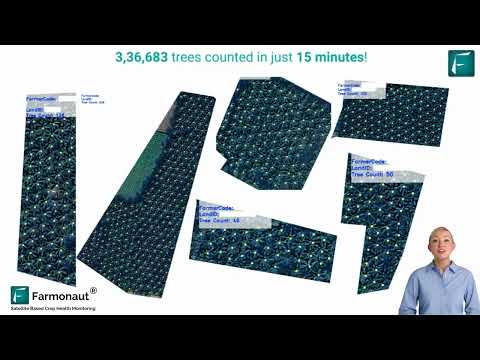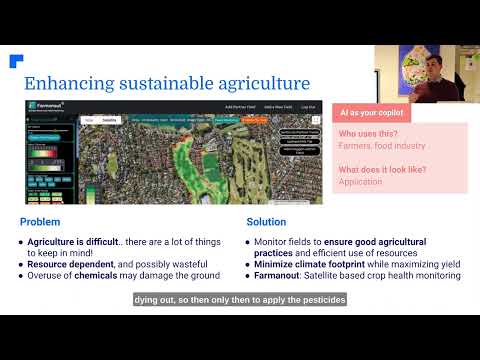Construction Drone Market Soars: Global Industry Forecast 2024-2032 Reveals Explosive Growth
“The global construction drone market is projected to triple from $6.5 billion in 2023 to $19 billion by 2032.”
We are witnessing a revolutionary transformation in the construction industry as drone technology takes flight, quite literally. The global construction drone market is poised for explosive growth, with forecasts predicting a remarkable expansion from $6.5 billion in 2023 to an astounding $19 billion by 2032. This surge represents a compound annual growth rate (CAGR) of 12.4% from 2024 to 2032, signaling a paradigm shift in how construction projects are planned, executed, and monitored.
In this comprehensive analysis, we’ll delve into the key drivers, market segments, and future opportunities that are propelling the construction drone industry to new heights. From land surveying to infrastructure inspection, drones are revolutionizing traditional construction practices, offering unprecedented efficiency, accuracy, and cost-effectiveness.
The Rise of Rotary-Wing Drones in Construction
“Rotary-wing drones dominate the construction drone market, offering superior versatility in urban and confined spaces.”
Among the various types of drones employed in construction, rotary-wing drones have emerged as the clear frontrunners. These agile aerial vehicles, characterized by their ability to hover and maneuver in tight spaces, have captured the lion’s share of the market. Their dominance can be attributed to several key factors:
- Versatility in urban environments
- Vertical takeoff and landing (VTOL) capabilities
- Precise control for detailed inspections
- Ability to navigate confined construction sites
The superiority of rotary-wing drones in construction applications is further evidenced by their adoption across various sectors, including residential, commercial, and industrial projects. Their ability to perform tasks such as aerial surveying, progress monitoring, and safety inspections with unparalleled precision has made them indispensable tools on modern construction sites.

Land Surveying: The Leading Application Driving Market Growth
Land surveying has emerged as the dominant application segment in the construction drone market, accounting for the largest share of revenue. This trend is driven by the growing demand for accurate topographical data and 3D mapping in infrastructure development projects. Drones have revolutionized the surveying process by offering several key advantages:
- Significant reduction in time and costs compared to traditional methods
- Delivery of high-quality geospatial data
- Enhanced efficiency in large-scale projects (e.g., highways, bridges, urban planning)
- Real-time terrain insights for informed decision-making
The adoption of drone technology for land surveying is particularly crucial in projects where detailed and up-to-date terrain information is essential. By providing accurate, comprehensive data in a fraction of the time required by conventional surveying methods, drones are enabling construction companies to optimize their planning and execution processes, ultimately leading to improved project outcomes and cost savings.
Residential Sector Leads in Drone Applications
In terms of end-user segments, the residential sector has emerged as the dominant force in the construction drone market. This leadership is driven by several factors:
- Increasing urbanization and demand for housing
- Adoption of advanced technologies in residential development
- Rise of smart home technologies
- Need for efficient property management and maintenance
Drones are being utilized in residential construction for various purposes, including:
- Site surveys and planning
- Progress monitoring and documentation
- Inspection of roofs and hard-to-reach areas
- Marketing and promotional aerial photography
The integration of drone technology in residential construction is not only improving project efficiency but also enhancing safety by reducing the need for manual inspections in potentially hazardous areas.
Asia-Pacific: The Epicenter of Construction Drone Market Growth
Geographically, the Asia-Pacific region has emerged as the powerhouse of the global construction drone market, accounting for the highest revenue share. This dominance can be attributed to several key factors:
- Rapid urbanization and infrastructure development
- Significant government investments in smart city initiatives
- Construction boom across countries like China, India, and Japan
- Growing emphasis on sustainability and efficiency in construction practices
The region’s leadership in the construction drone market is further bolstered by:
- Availability of cost-effective drone solutions
- Supportive regulatory frameworks promoting drone adoption
- Increasing awareness of the benefits of drone technology in construction
As the Asia-Pacific region continues to drive global economic growth, the demand for innovative construction technologies, including drones, is expected to soar, further cementing its position as the dominant market for construction drones.
Technological Advancements Fueling Market Growth
The rapid expansion of the construction drone market is largely driven by continuous technological advancements that enhance drone capabilities and expand their applications. Some of the key technological innovations propelling the market forward include:
- Extended flight times and improved battery life
- Advanced sensors and high-resolution cameras
- LiDAR technology for precise 3D mapping
- Integration with Building Information Modeling (BIM)
- Artificial Intelligence (AI) and machine learning for data analysis
- Internet of Things (IoT) connectivity for real-time monitoring
These technological advancements are not only improving the performance and capabilities of construction drones but also expanding their potential applications across various stages of construction projects.
Market Growth Forecast: A Closer Look
To better understand the explosive growth trajectory of the global construction drone market, let’s examine the projected market values and growth rates from 2024 to 2032:
| Year | Estimated Market Value (in billions USD) | Year-over-Year Growth Rate (%) |
|---|---|---|
| 2023 | 6.5 | – |
| 2024 | 7.3 | 12.3% |
| 2026 | 9.2 | 12.4% |
| 2028 | 11.6 | 12.5% |
| 2030 | 14.7 | 12.6% |
| 2032 | 19.0 | 12.7% |
This table illustrates the remarkable growth expected in the construction drone market over the next decade. The consistent year-over-year growth rates demonstrate the sustained demand for drone technology in the construction industry.
Key Drivers of Market Growth
Several factors are contributing to the rapid expansion of the construction drone market:
- Cost Optimization: Drones significantly reduce labor costs and time required for various construction tasks, leading to overall project cost savings.
- Safety and Risk Mitigation: By accessing hard-to-reach areas and hazardous environments, drones minimize human risk in construction sites.
- Technological Advancements: Continuous improvements in drone capabilities, including AI integration and improved sensors, expand their applications.
- Regulatory Support: Favorable government policies and regulations are encouraging the adoption of drone technology in construction.
- Increasing Demand for Precision: The need for accurate data and measurements in construction projects is driving drone adoption.

Applications Transforming the Construction Landscape
Construction drones are revolutionizing various aspects of the industry. Here are some key applications driving market growth:
- Land Surveying: Drones provide accurate topographical data and 3D mapping, essential for project planning and execution.
- Infrastructure Inspection: Aerial inspections of bridges, roads, and buildings ensure timely maintenance and reduce safety risks.
- Progress Monitoring: Real-time aerial footage helps track construction progress and identify potential delays.
- Security and Surveillance: Drones enhance site security through regular aerial patrols and monitoring.
- Environmental Impact Assessment: Aerial surveys help assess the environmental impact of construction projects.
These applications demonstrate the versatility and value of drone technology in addressing various challenges faced by the construction industry.
The Role of AI and Data Analytics in Construction Drones
The integration of Artificial Intelligence (AI) and advanced data analytics is elevating the capabilities of construction drones to new heights. This synergy is creating unprecedented opportunities for efficiency and innovation in the construction industry:
- Predictive Maintenance: AI algorithms can analyze drone-collected data to predict potential equipment failures or structural issues before they occur.
- Automated Progress Tracking: Machine learning models can automatically assess construction progress by comparing drone imagery with project plans.
- Safety Monitoring: AI-powered drones can identify potential safety hazards on construction sites in real-time.
- Resource Optimization: Data analytics help optimize resource allocation based on drone-collected insights about material usage and site conditions.
- Environmental Impact Assessment: AI can process drone imagery to evaluate the environmental impact of construction activities and suggest mitigation strategies.
As AI and data analytics technologies continue to evolve, we can expect even more sophisticated applications of drone technology in construction, further driving market growth and innovation.
Challenges and Opportunities in the Construction Drone Market
While the construction drone market is experiencing rapid growth, it also faces several challenges that present opportunities for innovation and improvement:
Challenges:
- Regulatory Compliance: Navigating complex and evolving drone regulations across different regions.
- Data Security: Ensuring the protection of sensitive project data collected by drones.
- Integration with Existing Systems: Seamlessly incorporating drone technology into established construction workflows and software.
- Skilled Operator Shortage: Addressing the need for trained drone pilots and data analysts in the construction industry.
Opportunities:
- Autonomous Drones: Development of fully autonomous drones for construction applications.
- Enhanced AI Integration: Further integration of AI for more advanced data analysis and decision-making support.
- Customized Solutions: Creation of industry-specific drone solutions tailored to unique construction needs.
- Training and Certification Programs: Establishment of standardized training programs for construction drone operators.
By addressing these challenges and capitalizing on emerging opportunities, the construction drone market is well-positioned for continued growth and innovation in the coming years.
The Future of Construction Drones: Emerging Trends
As we look towards the future of the construction drone market, several exciting trends are emerging that promise to shape the industry:
- 5G Integration: The rollout of 5G networks will enable real-time data transmission and enhance drone control capabilities.
- Swarm Technology: Multiple drones working in coordination for large-scale surveying and inspection tasks.
- Advanced Sensors: Integration of more sophisticated sensors for detailed environmental and structural analysis.
- Virtual and Augmented Reality: Combining drone data with VR/AR for immersive site visualization and planning.
- Green Technologies: Development of eco-friendly drones with longer flight times and reduced environmental impact.
These trends indicate a future where construction drones become even more integral to the industry, offering unprecedented levels of insight, efficiency, and innovation.
Global Market Dynamics: Regional Insights
While Asia-Pacific leads the construction drone market, other regions are also experiencing significant growth and unique trends:
North America:
- Strong adoption in commercial and residential construction
- Focus on regulatory frameworks for drone usage
- Emphasis on AI and machine learning integration
Europe:
- Growing use in infrastructure inspection and maintenance
- Stringent data protection regulations influencing market development
- Increasing focus on sustainable construction practices
Latin America:
- Emerging market with growing adoption in urban development projects
- Opportunities in mining and large-scale infrastructure projects
- Challenges in regulatory frameworks and technology adoption
Understanding these regional dynamics is crucial for stakeholders looking to capitalize on global market opportunities in the construction drone industry.
The Impact of Construction Drones on Project Management
The integration of drones in construction is revolutionizing project management practices:
- Enhanced Decision-Making: Real-time data from drones enables faster, more informed decision-making.
- Improved Communication: Aerial imagery and 3D models facilitate better communication among project stakeholders.
- Efficient Resource Allocation: Accurate site data helps optimize resource distribution and reduce waste.
- Risk Mitigation: Regular aerial inspections help identify and address potential issues early.
- Documentation and Compliance: Comprehensive aerial documentation supports regulatory compliance and dispute resolution.
As drone technology continues to evolve, we can expect even greater impacts on project management efficiency and effectiveness in the construction industry.
Sustainability and Environmental Considerations
Construction drones are playing a crucial role in promoting sustainability within the industry:
- Reduced Carbon Footprint: Drones minimize the need for vehicle-based inspections and surveys.
- Efficient Resource Management: Accurate data helps optimize material usage and reduce waste.
- Environmental Monitoring: Drones assist in assessing and mitigating the environmental impact of construction projects.
- Green Building Practices: Aerial data supports the implementation and verification of sustainable construction methods.
As the construction industry increasingly focuses on sustainability, drones will continue to play a vital role in achieving environmental goals.
Conclusion: A Soaring Future for Construction Drones
The global construction drone market is on an explosive growth trajectory, set to reach $19 billion by 2032. This remarkable expansion is driven by technological advancements, increasing demand for efficiency and safety in construction, and the versatile applications of drone technology across various sectors of the industry.
From land surveying and infrastructure inspection to project management and sustainability initiatives, drones are revolutionizing every aspect of construction. As we look to the future, the integration of AI, advanced sensors, and emerging technologies like 5G promises to further enhance the capabilities and impact of construction drones.
For stakeholders in the construction industry, from project managers to technology providers, the burgeoning drone market presents unprecedented opportunities for innovation, efficiency, and growth. As the industry continues to evolve, those who embrace and leverage drone technology will be well-positioned to lead in an increasingly competitive and technology-driven landscape.
The sky is truly the limit for the construction drone market, and its ascent shows no signs of slowing down. As we soar into this new era of construction technology, one thing is clear: drones are not just changing the way we build; they’re reshaping the very foundation of the construction industry.
FAQs
- What are the main types of drones used in construction?
The two main types are rotary-wing drones and fixed-wing drones, with rotary-wing drones being more popular due to their versatility in urban and confined spaces. - How do construction drones improve project efficiency?
Construction drones improve efficiency by providing rapid and accurate surveying, real-time progress monitoring, and enhancing safety through aerial inspections. - What are the key challenges in adopting drone technology in construction?
Key challenges include regulatory compliance, data security concerns, integration with existing systems, and the need for skilled operators. - How are AI and data analytics enhancing construction drone capabilities?
AI and data analytics enable predictive maintenance, automated progress tracking, safety monitoring, and resource optimization based on drone-collected data. - What is the future outlook for the construction drone market?
The market is expected to grow significantly, reaching $19 billion by 2032, driven by technological advancements and increasing adoption across various construction applications.
Earn With Farmonaut: Affiliate Program
Earn 20% recurring commission with Farmonaut’s affiliate program by sharing your promo code and helping farmers save 10%. Onboard 10 Elite farmers monthly to earn a minimum of $148,000 annually—start now and grow your income!







